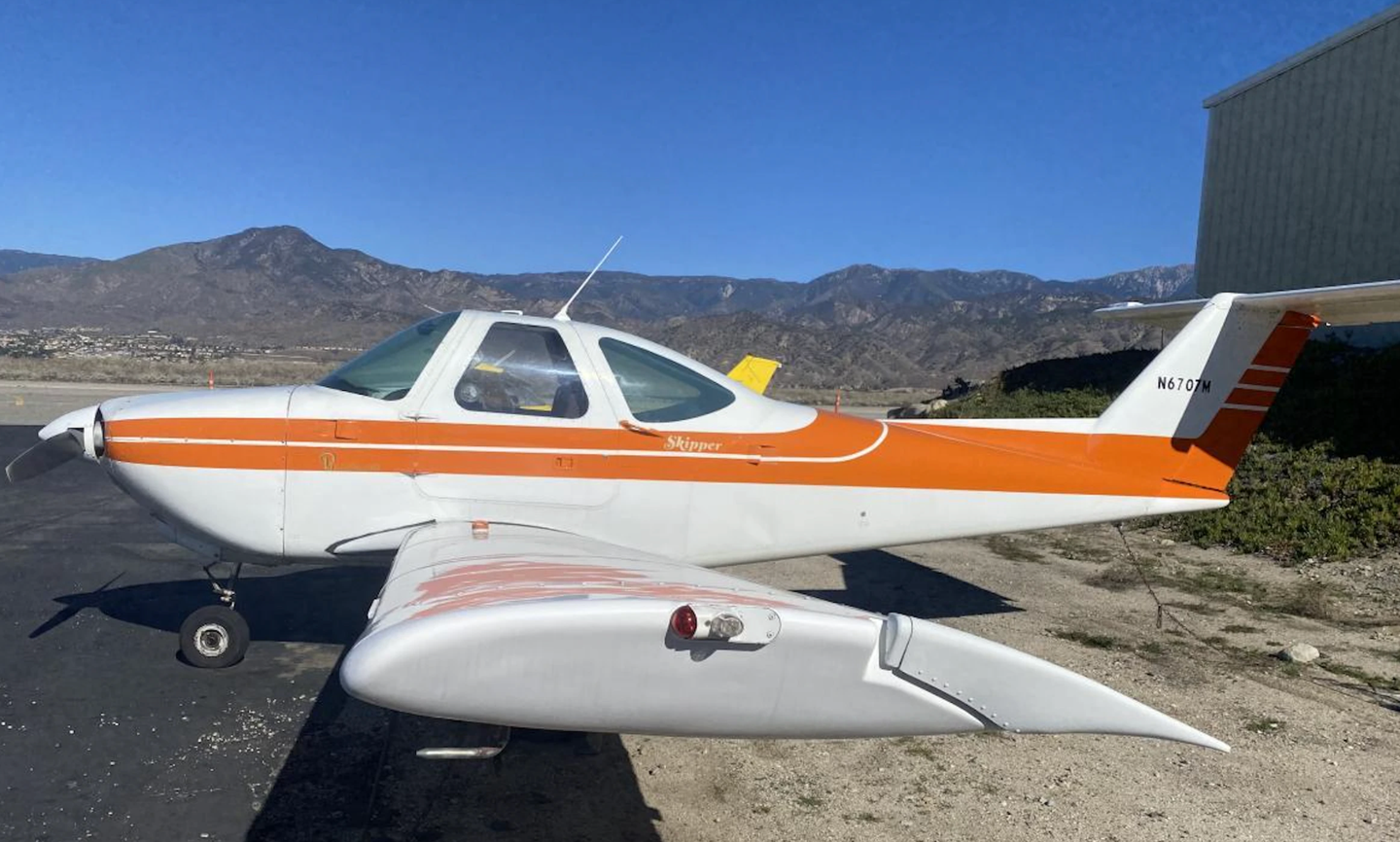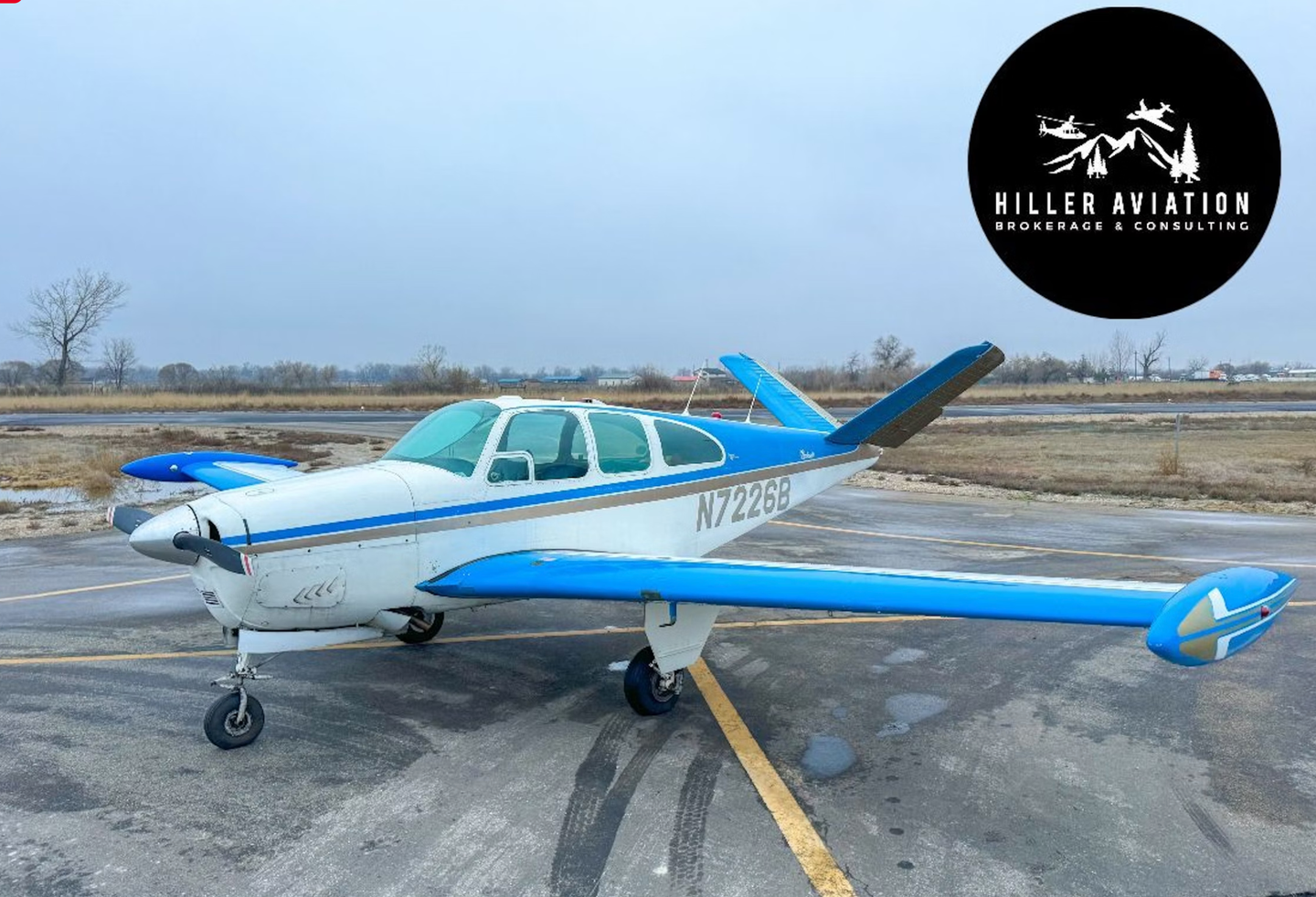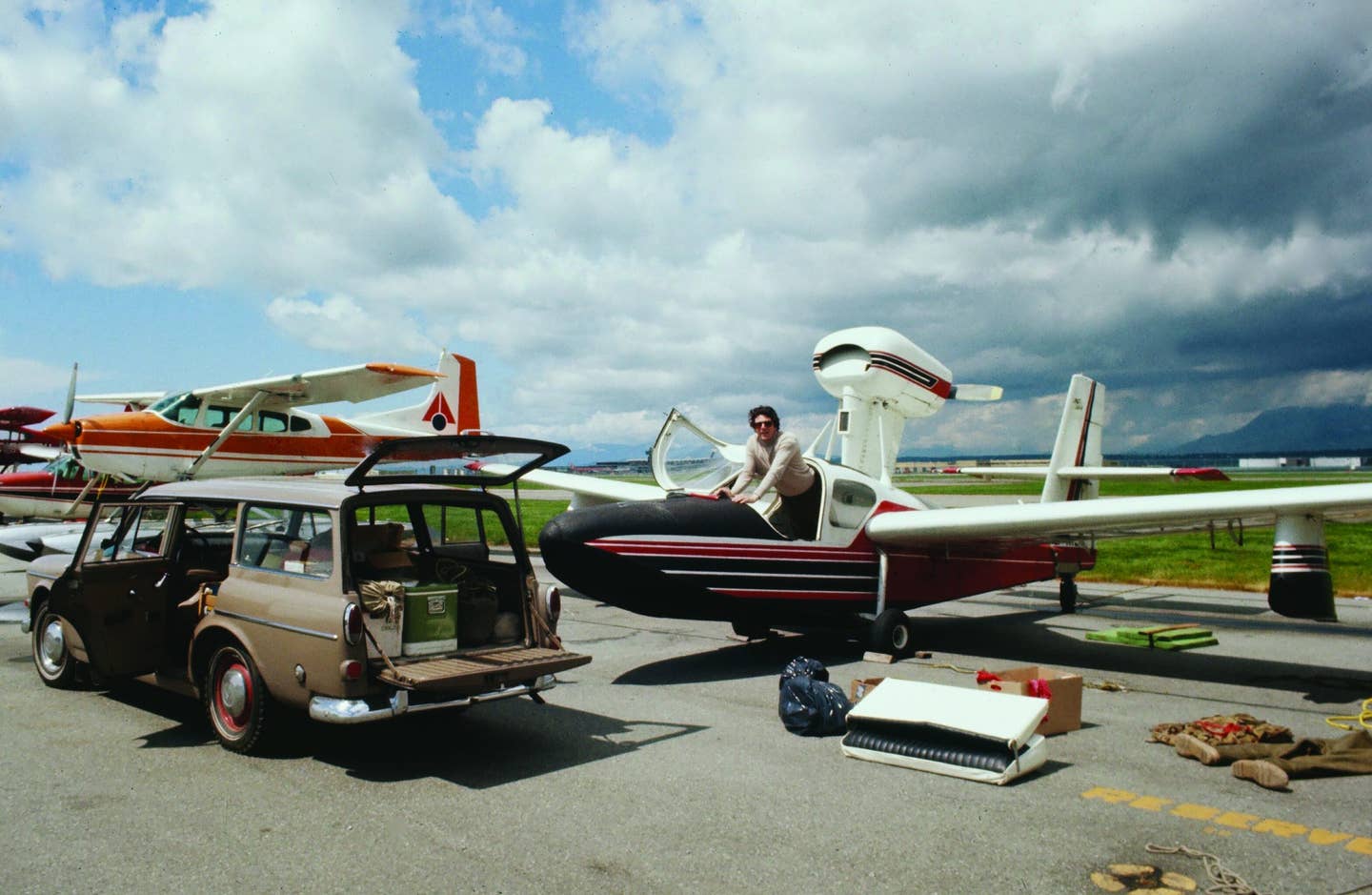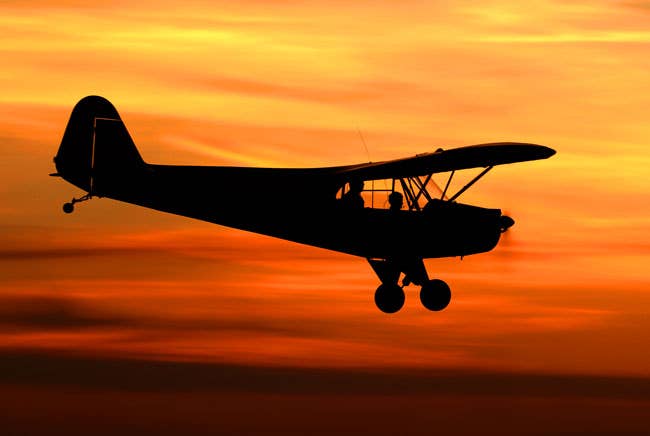Flying Into The Future
Behind the Bonanza’s anniversary makeover
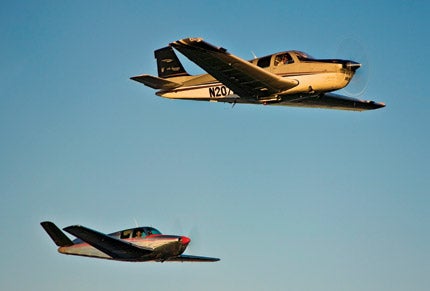 Baby boomers can appreciate the urge to have a little work done as a milestone birthday approaches: tone up the body, smooth out a few wrinkles, all to reflect the youthful zest we still feel in our hearts. So when Hawker Beechcraft Corporation (HBC, formerly Raytheon Aircraft) prepared for the Bonanza's 60th birthday, celebrated last year, the company decided a makeover was in order.
Baby boomers can appreciate the urge to have a little work done as a milestone birthday approaches: tone up the body, smooth out a few wrinkles, all to reflect the youthful zest we still feel in our hearts. So when Hawker Beechcraft Corporation (HBC, formerly Raytheon Aircraft) prepared for the Bonanza's 60th birthday, celebrated last year, the company decided a makeover was in order.
"The Bonanaza is a flagship for Beechcraft," said Trevor Blackmer, senior manager of HBC's product marketing. "That's 60 years' worth of celebrating, and it played into our deciding, ’Let's do something special for the Bonanza.'"
Worthy, indeed. Introduced in 1947, the Bonanza has been in continuous production longer than any aircraft in history, maintaining its position as the Cadillac of single-engine pistons all the while. Hawker Beechcraft wanted more than a cosmetic nip and tuck to mark the Bonanza's big six-oh. The goal was nothing less than "to bring the Bonanza of the future to our customers," in the words of HBC avionics engineer Natalie Byington. The result was a new model, the Bonanza G36, featuring a glass-panel cockpit, and then a 60th anniversary edition G36, introducing a redesigned interior (www.hawkerbeechcraft.com/beechcraft/aircraft/pistons/bonanzag36).
The "G" in G36 stands for Garmin, whose G1000 avionics suite is at the heart, or head, of the new Bonanza. Two 10.4-inch diagonal displays dominate the panel, replacing pneumatic "steam" gauges and annunciators. The primary flight display (PFD) in front of the pilot shows airspeed, heading, altitude and other critical flight information over a large artificial horizon. Altitude and air data information is fed to the system by a digital altitude heading reference system and an air data computer. A multi-function display (MFD) on the right side of the panel displays moving map, engine monitoring information, flight-planning functions, terrain awareness and warning system, real-time XM Weather and traffic information services.
Of course, HBC is hardly alone as a piston single offering this Garmin glass. Cessna, Columbia, Diamond, Mooney and Piper all offer G1000 panels in their aircraft. But HBC was the first to offer the system integrated with the Garmin GFC 700 autopilot/flight-control system. The GFC 700 was designed to work seamlessly with the G1000, and it provides much more flexibility and capability than G1000 systems run by third-party autopilots (the Bendix/King KAP 140 most commonly). Hawker Beechcraft spent several years working with Garmin, essentially tuning the autopilot for the airframe, setting servo rates and ensuring its smoothness of operation.
"One of the comments by the certification people in Europe was that they thought it was the nicest autopilot implementation of any aircraft in that category," Blackmer said. Customers seem to agree.
"I've been kind of seduced by the new autopilot," said G36 owner Andrew Bradley, of Norwich, Vt., contrasting the GFC 700--controlled system with the Bendix/King-driven G1000 systems he'd previously flown in Cessnas. "They didn't have as much flexibility," he said.
"I didn't understand what they meant by ’first integrated autopilot,'" said Joe Beck, an ocular surgeon from Wichita whose G36 is his fifth Bonanza. "Its ’capture' on approaches is so smooth. If you're doing a high-speed approach, it will start a bank very gently and you'll think, ’Wait, that's not right.' Then you think, ’I guess it is!' There's a constant delta in the rate. It's the most passenger-friendly autopilot I've seen."
What HBC has done with the G36 is essentially put a brain in the plane. Entire flight profiles can be programmed and flown, including climb and descent speeds and rates, even holding patterns. With updatable software driving the system, HBC can add more functionality as it becomes available. WAAS capability and Garmin's Safe Taxi charts for on-airport navigation are among the upgrades expected soon.
"You're getting essentially the capabilities you would expect in a 747 in your Bonanza," Blackmer said.
The net result is reduced pilot workload, greater situational awareness and improved safety. And the G36 also has a completely redesigned dual-bus electrical system with two batteries and two independent alternators. In the event of a catastrophic power failure, a standby electrically driven attitude indicator has its own battery power.
"A lot of guys I know have old Bonanzas, and they're fascinated by the avionics," said Dan Wray, of Carlsbad, Calif., who owned a 1982 Bonanza and a 1993 Beech Baron before buying a Bonanza G36. "They're truly impressed by the system redundancy."
But new panel or old, in an era of composite construction and computer-assisted design, how does a 60-year-old aircraft model survive, let alone remain a leader in performance and prestige in the single-engine market? It goes back to the genius of Beech Aircraft founder Walter Beech.
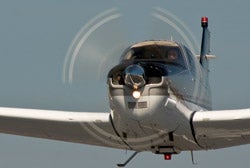 |
| From the original Model 35 to the latest G36, 60 years of evolution from Beechcraft have incorporated features that include new avionics, an upgraded interior with soundproofing, door seals and a roomy cabin. |
Beech established his company's reputation with the Model 17, commonly known as the Staggerwing, the deluxe biplane Beechcraft brought to market in 1934. The Staggerwing set the standard for performance and luxury in prewar GA aircraft. As World War II wound down, U.S. aircraft manufacturers looked ahead to the postwar market for GA aircraft. And Beech was again determined to lead the pack. His engineer Ralph Harmon led the design team charged with creating the plane Beech envisioned. The team developed what was arguably the first modern GA aircraft. The Model 35, or Bonanza, as the company dubbed the new low-wing monoplane, featured an all-metal airframe, tricycle landing gear and a distinctive V-tail, called a ruddervator, combining the functions of the rudder and elevators.
"It was very innovative for its day," said Wade McNabb, CEO of the Beechcraft Heritage Museum (www.beechcraftheritagemuseum.org) in Tullahoma, Tenn., which owns what's likely the oldest flying Bonanza, a 1947 Model 35, serial number 17. "Beech learned a lot during World War II about making metal aircraft."
The V-tail would gain notoriety as Bonanzas suffered a disproportionate number of in-flight break-ups. A series of airworthiness directives and strengthened tail design mitigated the problem, but production of Model 35 V-tail variants ended in 1982. The straight tail was introduced with the Model 33 in 1959. Initially called the Debonair, the Model 33 was designed as a low-cost Bonanza to compete with Cessna and Piper singles. Over the years, Beechcraft gradually made Model 33 variants more upscale. Production of the Model 33 line ended in 1995. Similarly, the current Model 36 line began life in 1968 as a stretch variant of the Model 33 aimed at the utility market. Again, the company decided to upscale the product. The A36, introduced in 1970 featured an upgraded interior and higher gross weight. The A36 remained in production until it was replaced by the G36 in late 2005.
So after 60 years of evolution in some 40 Bonanza variants, how recognizable is the G36 as the offspring of the original Model 35? Observers had a couple of opportunities for side-by-side comparisons during the Bonanza's 60th anniversary. At EAA AirVenture in 2007, the annual "Bonanzas to Oshkosh" group flight---more than 100 Bonanzas strong---was led by HBC's 60th anniversary edition demo aircraft, N207BB, flanked by the Heritage Museum's 1947 Bonanza, NC80418, in the first echelon. The two aircraft reunited at the Beechcraft Birthday Party held at the Beechcraft Heritage Museum last fall.
The '47 Model 35 is all gleaming polished aluminum, a pristine classic. The six-place G36, bigger and brawnier, looks like it's much more ready for business. At 300 horsepower, its engine is almost twice as powerful as the 165 hp motors in the first Model 35s.
Nonetheless, the family resemblance is unmistakable. The shape of the airframes are basically the same. During development, models of the Bonanza were subjected to extensive wind-tunnel testing, resulting in its optimized performance. "There's very little aerodynamically you could do to that airplane to improve it," said Byington.
Performance-wise, there's little difference between the G36 and its A36 predecessor. It still delivers a high-speed cruise of better than 170 knots at all altitudes through 10,000 feet. And for those who want to go faster and higher, a Tornado Alley (www.taturbo.com) turbonormalizer is a popular aftermarket item. (Both Beck and Wray opted for the conversion in their G36s.)
But designers found other ways besides the avionics to bring the Bonanza into the future. The anniversary edition introduced an upgraded interior. It includes new ergonomic sidewalls that provide more elbow room, adding about three inches to the cabin width. Improved soundproofing and door seals have lowered cabin noise. An integrated digital audio control system and optional vapor-cycle air-conditioning enhance the quality of flight. And a lighter color palette of interior fabrics and leathers grace the cabin. "Aesthetically, it looks more like an airplane built in 2000 than the ’90s," said Blackmer.
Of course, the Model 36 boasted one of the roomiest and most luxurious interiors to begin with. Its size and the club-seating configuration are also a big selling point for many customers. The cabin's double doors, originally intended for the gritty utility work for which the aircraft was certified, now seem more like the portal to a royal coach.
"I've got a wife and three kids and a big old dog, so the six-seat configuration was crucial," said Bradley, a first-time Bonanza buyer. He looked at competitors' six-place aircraft but "didn't want to trade off fuel or speed for taking a full cabin."
The anniversary edition G36 sports distinctive badging, medallions and emblems on the wings, empennage, headrests and control pedestal. The anniversary model also debuted a long-lasting silver mica paint meant to mimic the polished aluminum of the original Model 35, now being offered throughout its product line. (The reduced metal content of the paint will also allow it to be used on radomes, unlike traditional metallic paints.)
Buyers of the G36 also get some extras that aren't visible to the casual observer. Perhaps most important is a week of training for the G1000 system at FlightSafety International (www.flightsafety.com). The G1000 is only as capable as its operator, and like fire, it makes a bad master as well as a good servant.
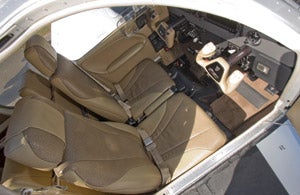 |
| The new Bonanza G36 features a Garmin G1000 avionics glass panel that's integrated with the Garmin GFC 700 autopilot/flight-control system. |
"I thought that I might be wasting my time," Beck said of the FlightSafety course, considering his experience with earlier Garmin boxes. "I needed the whole thing. If you're going to fly IMC, it's a disaster waiting to happen without full training," he said.
And almost as important, buyers become members of one of the most fraternal groups in aviation---Bonanza owners. The American Bonanza Society (www.bonanza.org) is a model for owners groups, sponsoring formation training, type-specific refresher courses and maintenance clinics around the country. With its dedicated owners and the G36 blazing the way into the future, Bonanzas will likely be around for several more milestone anniversaries.
"When I look at the 60th anniversary airplane," said Byington, "I see the blood, sweat and tears we've poured into keeping it going and upgrading it and keeping that heritage alive. The first 60 years was only the beginning."

Subscribe to Our Newsletter
Get the latest Plane & Pilot Magazine stories delivered directly to your inbox


